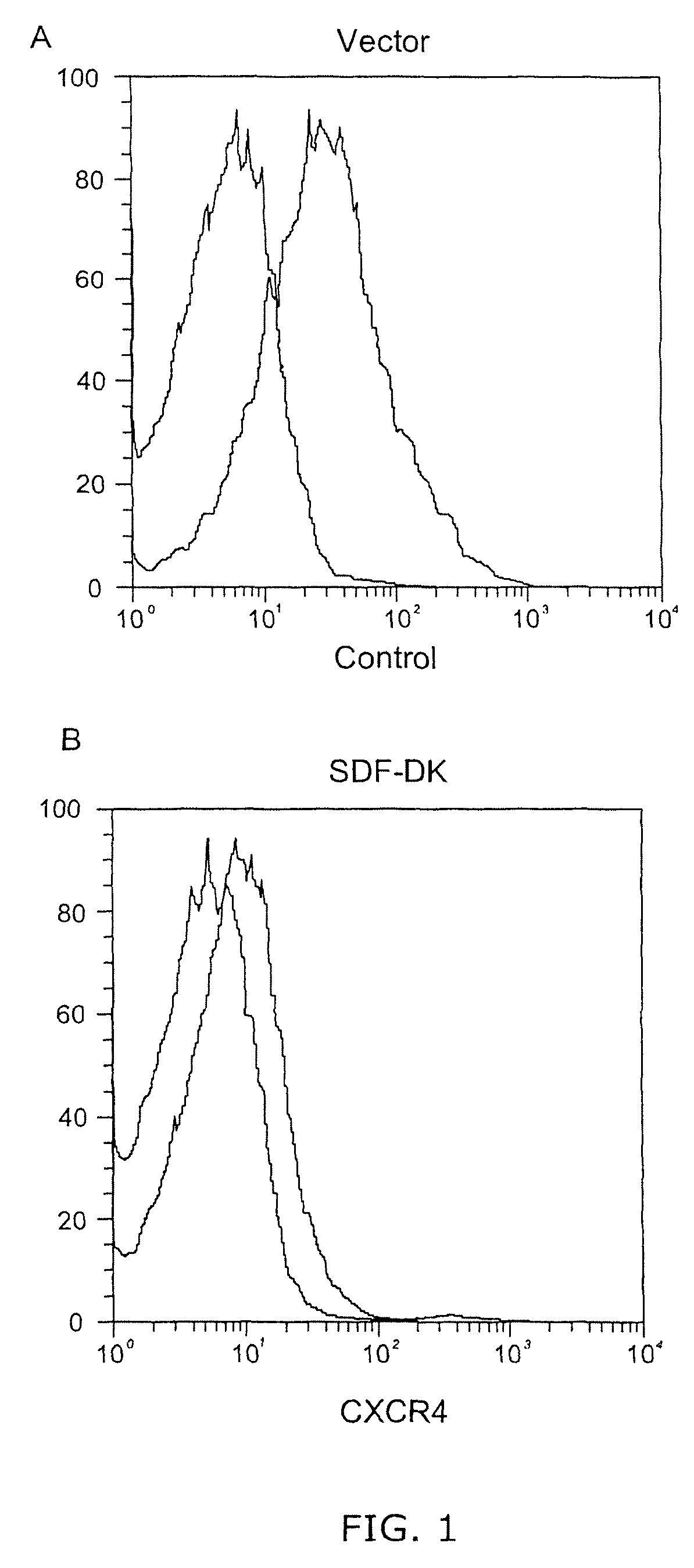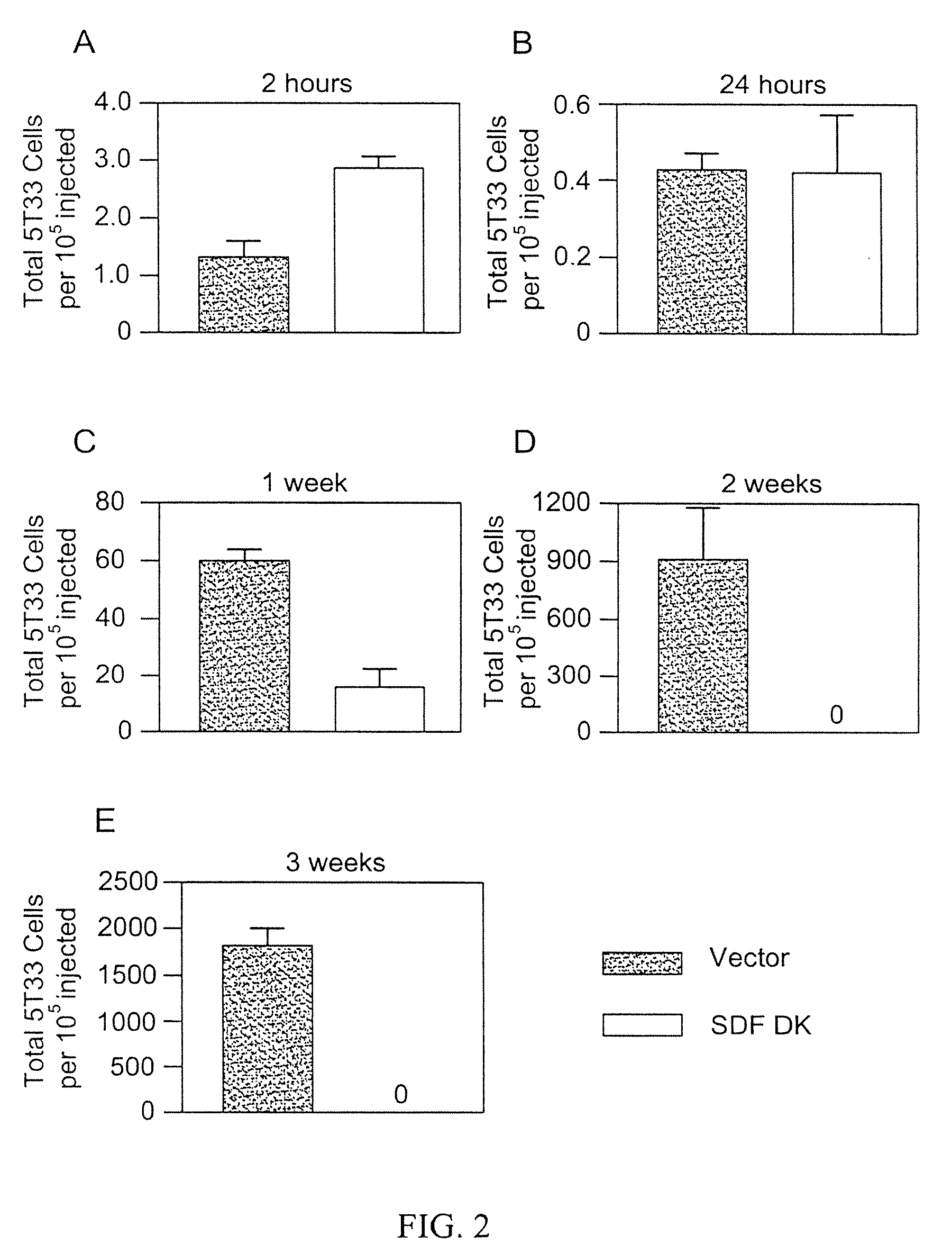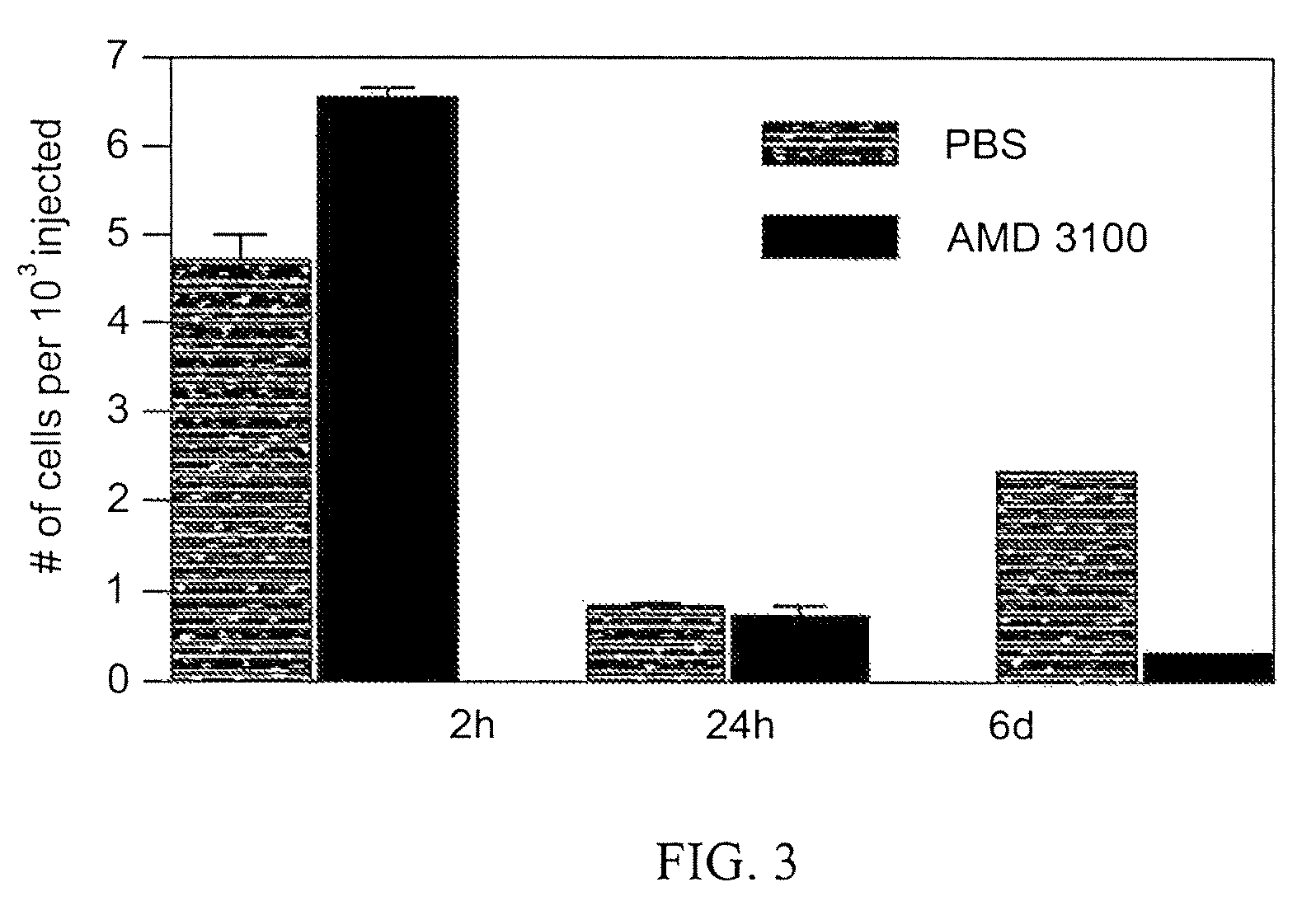Methods for the treatment of multiple myeloma
a technology for multiple myeloma and treatment methods, applied in the field of treatment methods for hematological malignancies, can solve the problems of patient death, inability to cure the disease, and currently no cure for the diseas
- Summary
- Abstract
- Description
- Claims
- Application Information
AI Technical Summary
Benefits of technology
Problems solved by technology
Method used
Image
Examples
example 1
Maintenance of 5T33mM Cells
[0061]5T33mM cells can be maintained both in vivo and in vitro. For in vivo maintenance, the bone marrow of sick mice is isolated by flushing long bones (femora and tibia) with sterile phosphate buffered saline (PBS). Flushing is performed with a syringe through a 21G needle. After isolation, red blood cells are lysed and a single cell suspension is prepared. These cells are injected in a secondary recipient, which develops the disease within a certain time period. The time for multiple myeloma development depends on the number of cells injected. For in vitro maintenance, 5T33mM cells are cultured in a special media, which includes RPMI-1640, 10% fetal calf serum (FCS), L-glutamine, penicillin and streptomycin, sodium pyruvate, non-essential amino acids, and .beta.-mercaptoethanol. Cells are seeded in a culture flask, and media is changed once in three days. Injection of the in vitro cultured cells mediates disease development in recipient mice within 2-4 ...
example 2
CXCR4Expression in Mouse 5T33mM Cells
[0062]Cells that home to the bone marrow typically utilize signals from the chemokine receptor CXCR4 to undergo integrin mediated arrest. 5T33mM cells express CXCR4, and it is hypothesized that the development of multiple myeloma can be disrupted by interfering with cell signaling through the CXCR4 receptor. Accordingly, a virus that expresses the SDF1α degrakine is transduced into 5T33mM cells to reduce the expression of CXCR4 using retroviral technology.
[0063]The production of the retrovirus is performed as described in Li et al., J. Exp. Med., 189, pages 1399-1512 (1999), the disclosure of which is incorporated by reference herein in its entirety. 10 μg of retroviral vector DNA and 5 μg of MCV-ecopac, an ecotropic single-genome packaging construct, are transfected as per a 6-cm dish of HEK-293T as described in Finer et al., Blood, 83, pages 43-50 (1994). The medium is changed at 24 hours, and a virus supernatant is harvested at 48 hours after ...
example 3
Bone Marrow Homing of Mouse 5T33mM Cells
[0065]5T33mM cells, obtained as described above, are injected into recipient mice. While homing (2 hours) and retention (24 hours) does not depend on CXCR4 expression, later events, such as cell proliferation and / or survival (1 to 3 weeks) are decreased in the absence of CXCR4 (FIG. 2).
[0066]Similar results are obtained when 5T33mM cells are manipulated pharmaceutically instead of genetically: when recipients are treated with the CXCR4 inhibitor AMD3100, it does not affect the homing (2 hours) or retention (24 hours) of the 5T33mM cells, but it significantly reduces their proliferation / survival (6 days) (FIG. 3).
PUM
| Property | Measurement | Unit |
|---|---|---|
| time | aaaaa | aaaaa |
| time period | aaaaa | aaaaa |
| time period | aaaaa | aaaaa |
Abstract
Description
Claims
Application Information
 Login to View More
Login to View More - R&D
- Intellectual Property
- Life Sciences
- Materials
- Tech Scout
- Unparalleled Data Quality
- Higher Quality Content
- 60% Fewer Hallucinations
Browse by: Latest US Patents, China's latest patents, Technical Efficacy Thesaurus, Application Domain, Technology Topic, Popular Technical Reports.
© 2025 PatSnap. All rights reserved.Legal|Privacy policy|Modern Slavery Act Transparency Statement|Sitemap|About US| Contact US: help@patsnap.com



